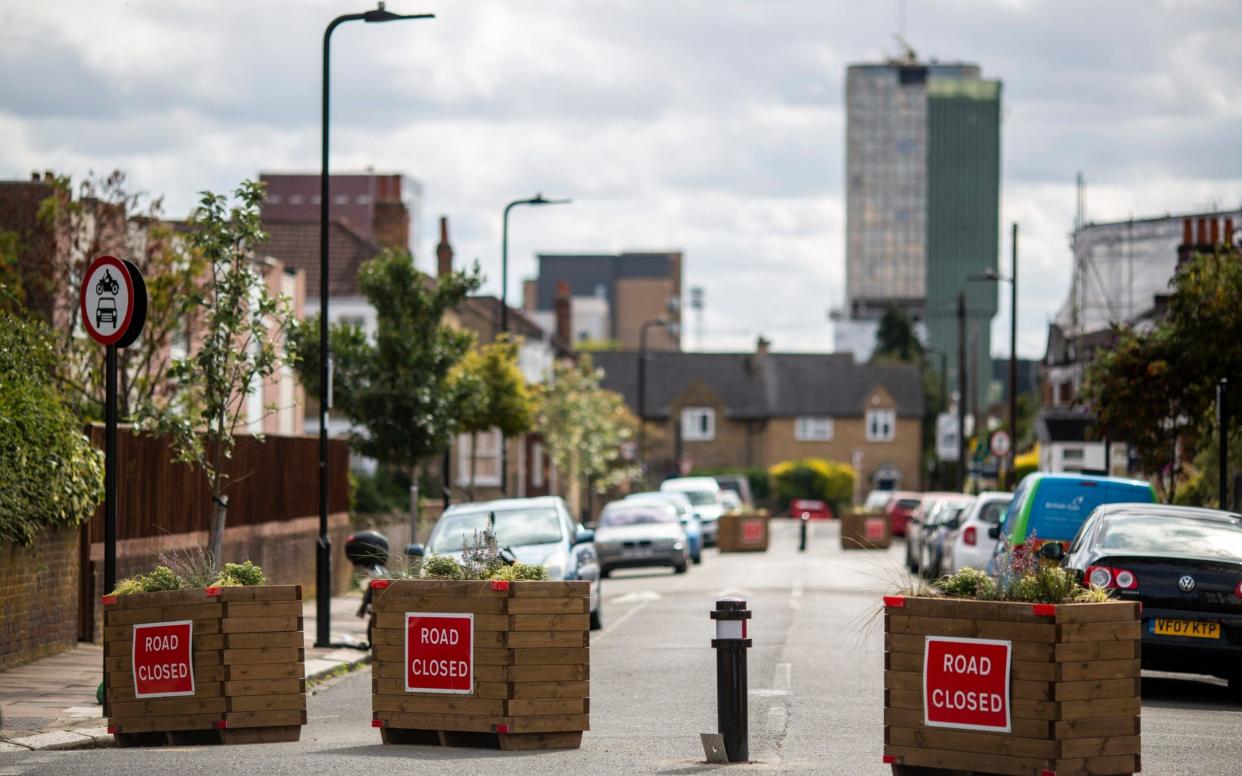Low Traffic Neighbourhoods make it difficult for officers to pursue violent criminals, Met Commissioner warns

- Oops!Something went wrong.Please try again later.
Low Traffic Neighbourhood schemes are making it more difficult for police officers to pursue dangerous and violent criminals, the Met Commissioner has warned.
Dame Cressida Dick said response times were being impacted by the traffic calming measures that have blocked off many residential roads across a number of London boroughs.
Appearing on her regular radio phone-in on LBC, Dame Cressida acknowledged that the imposition of LTNs was a "contentious issue", but said the responsibility lay with Transport for London.
Asked if they were hindering her officers, she replied: "On occasion, of course it is harder for our officers to get through streets and roads that they previously could get through much faster."
The Commissioner was played a clip from one of her officers who had given an interview in which he had said blocked off roads meant it was difficult to pursue armed criminals.
The officer said he believed it would only be a matter of time before someone lost their lives because the emergency services could not get to them in time.
He explained: "So these have all been put in, all round the borough, in low traffic neighbourhoods, which obviously if we’re chasing people with machetes and I’m coming round the corner and I can’t go anywhere, that’s more people with machetes getting away.
"Because of all these measures and everything like that, it won’t be long until someone passes away because some emergency services can’t get to somebody. Whether it be police, ambulance, or fire brigade.”
Responding to the clip, Dame Cressida said: "Well, I completely understand his perspective, I go out in vehicles a lot, many of my best friends drive response vehicles, many of them were driving ambulances not so long ago, and they absolutely do comment on this."
She added: "I absolutely accept that it is really getting quite difficult for them in some places and our response times will suffer.
"However, on the other hand, and that’s frustrating for them, on the other hand it may be that other people’s deaths are reduced and also this is a long-term thing about trying to make, as I understand it, not my issue, trying to make our city safer for cyclists and safer for pedestrians."
But she said she was not calling for a review insisting it was a balancing act: "We all want to save lives and all the measures that are being taken are designed to save lives, but we're a life saving organisation as well."
Earlier this month the Telegraph revealed how paramedics reported LTNs and pop up cycle lanes every other day in London, registering 159 times when emergency responses had been affected by road closures.
LTNs have also been accused of dividing communities with streets inside the schemes left virtually traffic free, while those on the perimeter, often in poorer neighbourhoods, are clogged with cars during rush hour.
